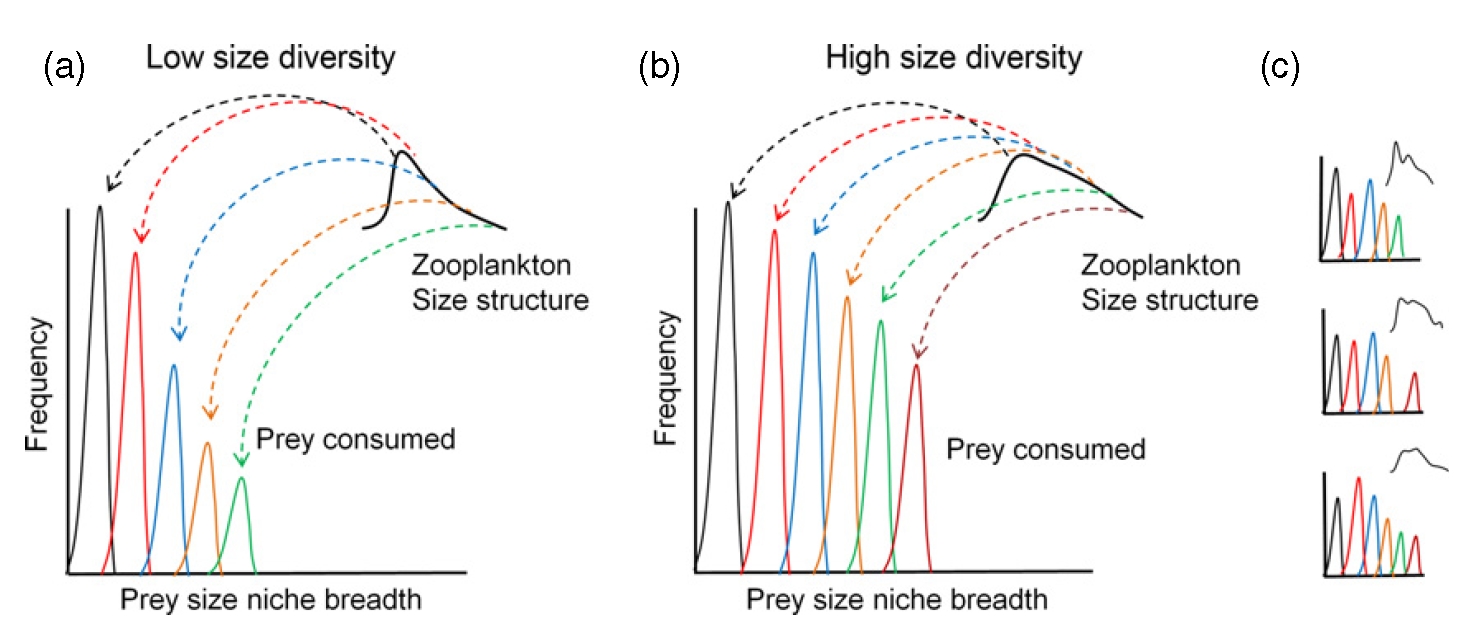
Newsroom
Zooplankton Size Diversity Can Promote Strength of Top-down Control in Pelagic Food-web

Body size is one of the fundamental characteristics of organisms. Recent studies suggest that environmental changes alter the size structure of food-webs in aquatic ecosystems; however, ecosystem consequences of such changes remain unclear.
Recently, researchers from Institute of Hydrobiology, Chinese Academy of Sciences (IHB) together with their collaborators published their research findings entitled ‘Increasing zooplankton size diversity enhances the strength of top-down control on phytoplankton through diet niche partitioning’ in the Journal of Animal Ecology. Their work reported a novel mechanism on how zooplankton size diversity affects the strength of top-down control on phytoplankton.
In this paper, they proposed and tested a novel hypothesis that increasing zooplankton size diversity enhances top-down control on phytoplankton (H1) and compared it with five conventional hypotheses explaining the top-downcontrol: flatter zooplankton size spectrum enhances the strength of top-down control (H2); nutrient enrichment lessens the strength of top-down control (H3); increasing zooplankton taxonomic diversity enhances the strength of top-down control (H4); increasing fish predation decreases the strength of top-down control of zooplankton on phytoplankton through trophic cascade (H5); increasing temperature intensifies the strength of top-down control (H6).
With large-scale field data from the East China Sea, their analyses support the hypotheses based on zooplankton size diversity (H1), zooplankton size spectrum (H2), nutrient (H3) and zooplankton taxonomic diversity (H4), but not the hypotheses based on fish predation (H5) and temperature (H6). More in-depth analyses indicate that zooplankton size diversity is the most important factor in determining the strength of top-down control on phytoplankton in the East China Sea.
This research suggests a new potential mechanism that increasing predator size diversity enhances the strength of top-down control on prey through diet niche partitioning. This mechanism can be explained by the optimal predator–prey body-mass ratio concept. Suppose each size group of zooplankton predators has its own optimal phytoplankton prey size, increasing size diversity of zooplankton would promote diet niche partitioning of predators and thus elevates the strength of top-down control.